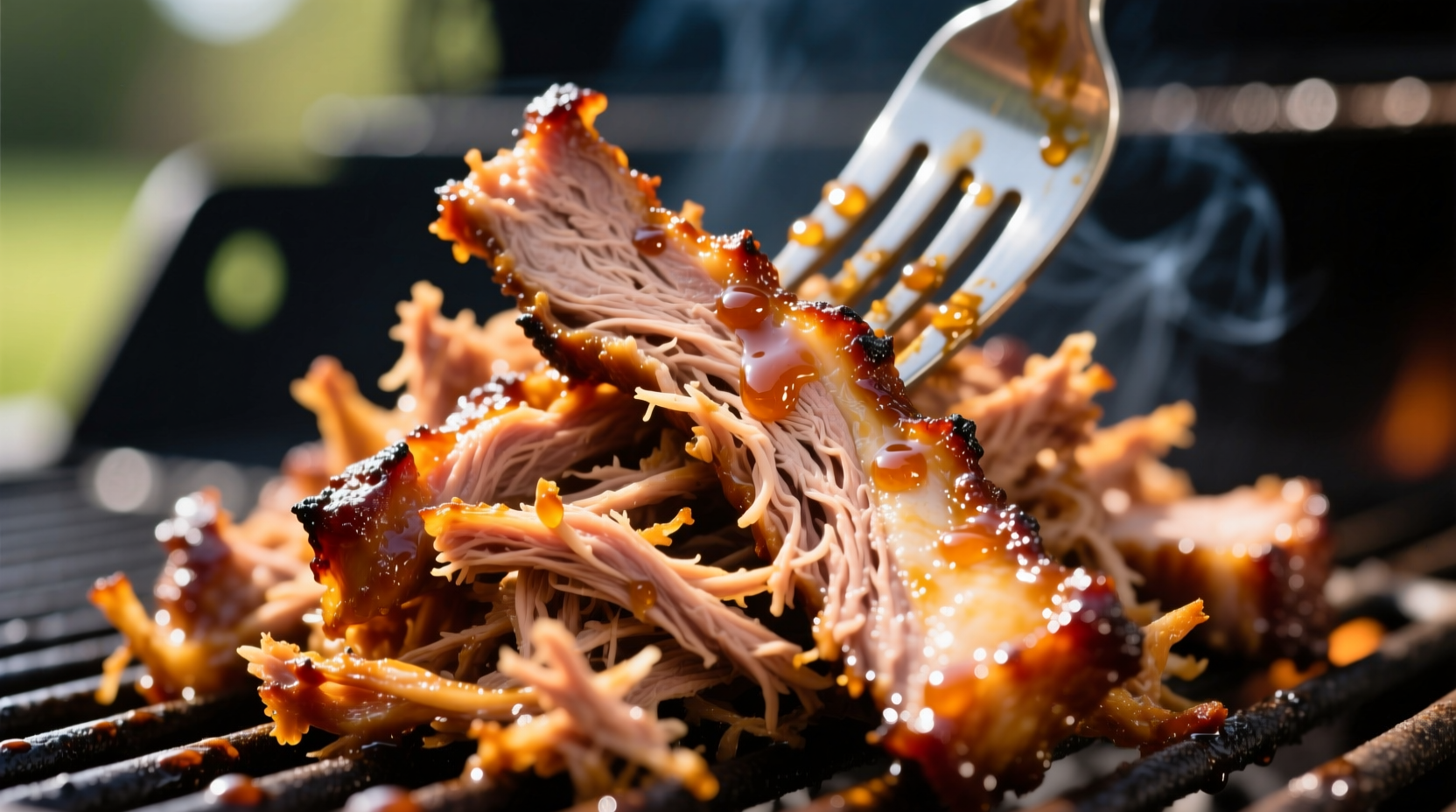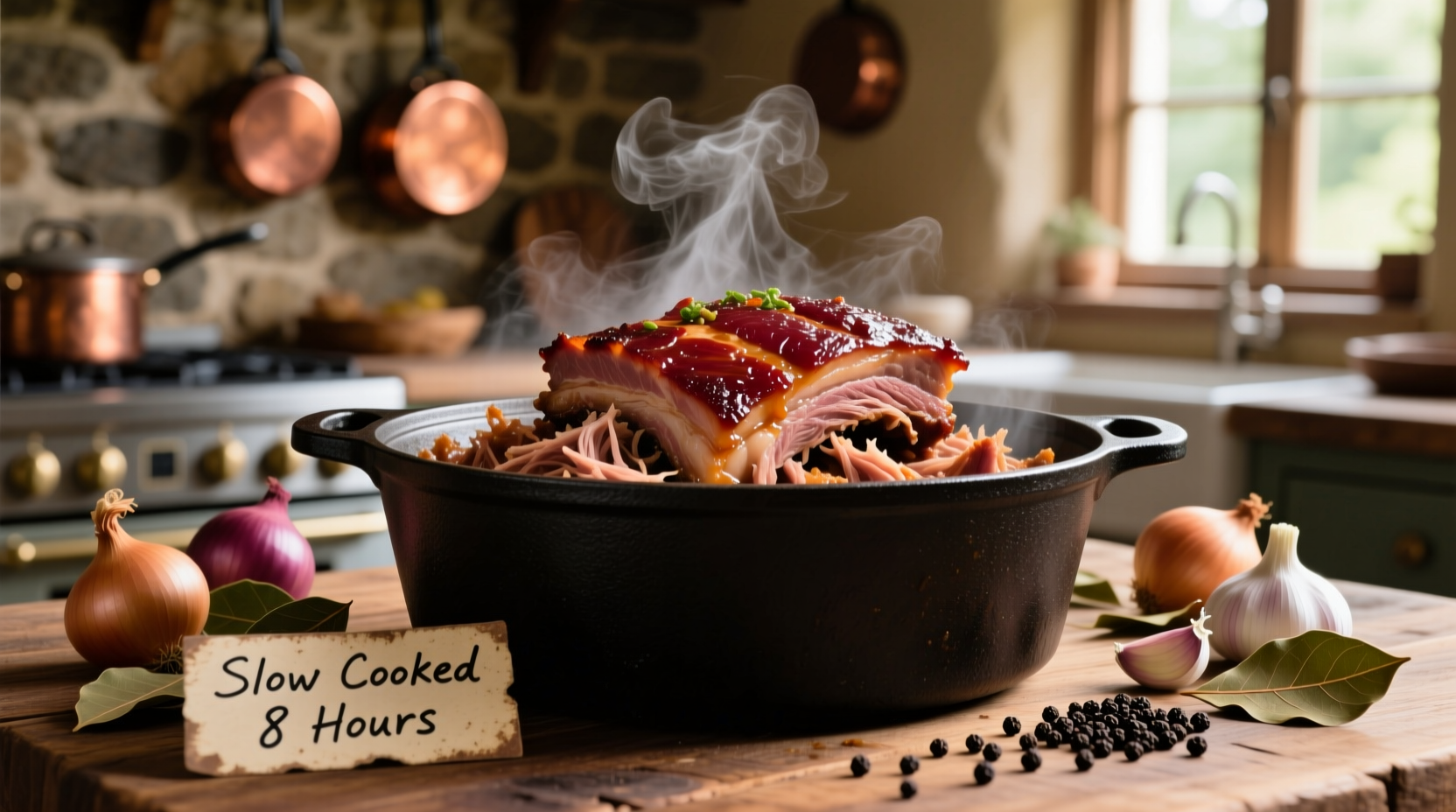There's nothing quite like perfectly executed pulled pork—moist, flavorful strands of meat that practically melt in your mouth. Yet many home cooks struggle with dry, tough results despite hours of cooking. The secret lies not just in patience, but in understanding the precise science behind transforming tough connective tissue into succulent perfection through controlled slow cooking.
Why Slow Cooking Transforms Pork Shoulder
Pork shoulder (also called pork butt or Boston butt) contains abundant collagen and fat marbling that would be unpleasant when cooked quickly. During slow cooking, collagen gradually converts to gelatin between 160-205°F, while fat renders slowly, basting the meat from within. This biological transformation, known as collagen hydrolysis, is what creates pulled pork's distinctive tender texture.
| Cooking Stage | Temperature Range | Transformation Process | Time Required |
|---|---|---|---|
| Initial Cooking | 140-160°F | Protein denaturation begins | 1-2 hours |
| Collagen Breakdown | 160-195°F | Collagen converts to gelatin | 4-6 hours |
| Complete Tenderization | 195-205°F | Fat fully rendered, meat shreds easily | 2-3 hours |
Essential Equipment for Perfect Pulled Pork
While dedicated smokers produce exceptional results, you can achieve professional-quality pulled pork with basic kitchen equipment. The USDA Food Safety and Inspection Service confirms that slow cookers, ovens, and smokers all safely cook pork to the required minimum internal temperature of 145°F (with 3-minute rest), though pulled pork requires higher temperatures for proper texture.
Must-have tools:
- Digital probe thermometer (critical for monitoring internal temperature)
- Heavy-duty roasting pan or slow cooker (6-quart minimum)
- Two sturdy meat forks for shredding
- Aluminum foil for resting meat
Selecting the Perfect Pork Shoulder
Not all pork shoulders deliver equal results. Look for a 3-4 pound bone-in Boston butt with:
- Even marbling throughout (avoid large solid fat deposits)
- Pinkish-red color (avoid grayish hues)
- At least 1/4 inch fat cap remaining
Bone-in cuts provide better flavor distribution and help maintain moisture during the lengthy cooking process. The bone creates natural channels for heat penetration while contributing additional collagen to the cooking liquid.

Step-by-Step Slow Cooking Process
Preparation (20 minutes)
Dry the pork shoulder thoroughly with paper towels—moisture is the enemy of proper browning. Apply a generous 1/4 inch layer of dry rub, pressing spices into the meat surface. For authentic flavor development, let the seasoned pork rest uncovered in the refrigerator for 12-24 hours before cooking.
Cooking (8-10 hours)
Place pork fat-side up in your cooking vessel with 1 cup liquid (apple juice, broth, or vinegar-based solution). Maintain a steady 225-250°F environment. After 4 hours, check temperature—it should be around 160°F. Continue cooking until internal temperature reaches 195-205°F (typically 8-10 hours total).
Important context boundary: Slow cooking below 200°F requires strict food safety monitoring. The USDA recommends not keeping food in the temperature danger zone (40-140°F) for more than 2 hours. Ensure your cooking method maintains temperatures above 140°F within 2 hours of starting.
Resting and Shredding (1 hour)
Remove pork from heat and let rest, tented with foil, for 45-60 minutes. This crucial step allows juices to redistribute. Shred by pulling meat with two forks against the grain, discarding any large fat deposits. Reserve 1-2 cups of cooking liquid for moisture adjustment.
Perfecting Your Pulled Pork: Pro Tips
Professional pitmasters employ these techniques to elevate their pulled pork:
- The Texas Crutch: After 5 hours of cooking, wrap pork tightly in butcher paper or aluminum foil with 1/4 cup liquid to accelerate tenderization while retaining moisture
- Temperature Stalling: Expect a 2-4 hour plateau around 160-170°F as evaporative cooling occurs—this is normal and necessary for proper texture development
- Moisture Management: Mix reserved cooking liquid with sauce before adding to shredded meat (typically 1/4 cup liquid per pound of meat)
Troubleshooting Common Pulled Pork Problems
Dry, stringy texture: Likely undercooked—meat needs to reach 195-205°F for proper collagen breakdown. Return to cooker with additional liquid.
Meat won't shred: Temperature hasn't reached the critical 190°F threshold where connective tissues fully break down. Continue cooking in 30-minute increments.
Excessive fat: While some fat is essential for flavor, large solid deposits won't render properly. Trim these before serving—they'll remain unpleasantly chewy.
Serving and Storage Guidelines
Serve pulled pork immediately on brioche buns with your favorite barbecue sauce, or refrigerate for up to 4 days. For optimal reheating, place pork in a covered dish with reserved juices and warm at 275°F until internal temperature reaches 165°F. The National Pork Board confirms properly stored cooked pork maintains quality for 3-4 days in refrigeration.











 浙公网安备
33010002000092号
浙公网安备
33010002000092号 浙B2-20120091-4
浙B2-20120091-4